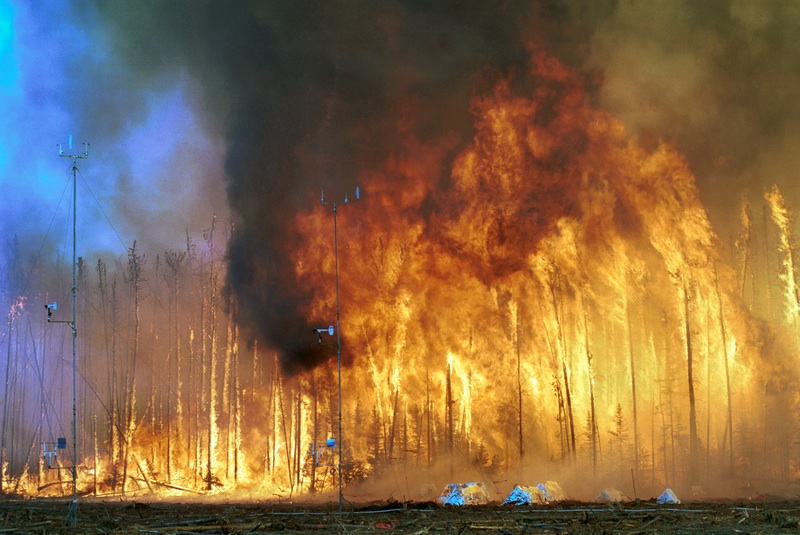We're open daily! View holiday hours
Science News
(Lord of the) Rings of Fire
December 21, 2010

By Anne Holden
In many ways, our lasting impact on the planet is not good. Global warming, pollution, deforestation, and drought are the direct result of our actions. Prevailing wisdom says that our fondness to change the natural landscape to fit our needs is linked to European expansion, beginning in the 16th century.
But what if this tendency can be traced back much further in time? New research by scientists at Montana State University examines how the varied landscape of New Zealand may offer some insight. The intriguing results can be found in this week’s Proceedings of the National Academy of Sciences.
The team, led by Dave McWerthy, tried to settle a debate that had been raging for years: why have so many forests been replaced by grasslands? This is not a new phenomenon, but appears to have been going on for at least a few hundred years. Is it due to natural wildfires, or did humans play a more ‘active’ role?
McWerthy and his team put these hypotheses to the test, focusing their efforts on the environment of New Zealand. Why New Zealand? In addition to its gorgeous scenery (and supposedly high population of Orcs), New Zealand’s multiple mountain ranges have helped create the perfect variety of landscapes to study.
New Zealand is also unique in that it was first settled by humans just 800 years ago. The Maori people, island hoppers from the South Pacific, set foot in New Zealand in the year 1280. European sailors didn’t arrive until the year 1830. This recent time frame gave McWerthy’s team three distinct points in history by which to compare New Zealand’s landscape.
McWerthy used carbon-14 dating on preserved charcoal samples from forests dating to these three time periods. After they traced the path and frequency of fires across the country, they were intrigued by the results .
The team’s analyses revealed that, prior to the arrival of the Maori, wildfires in New Zealand were pretty rare – only flaring up once or twice every thousand years. But after the Maori arrival, we see a completely different story: a “burst of several fire events,” according to McWerthy.
These events radically changed the landscape, increasing soil erosion and altering vast stretches of forests to grasslands. And, just when the Maori began to cut back on their fires and some forests began to grow again, the Europeans arrived, bringing with them an even greater surge of burning. This time around, the forests had no chance of recovery.
This research, while answering many questions, also gives us new ones. Many of us associate deforestation with humanity’s more recent expansions. Could our fondness for altering our own landscape go back much farther? At least in New Zealand, the answer appears to be yes.
Anne Holden, a docent at the California Academy of Sciences, is a PhD trained genetic anthropologist and science writer living in San Francisco.
Image: USDA Forest Service